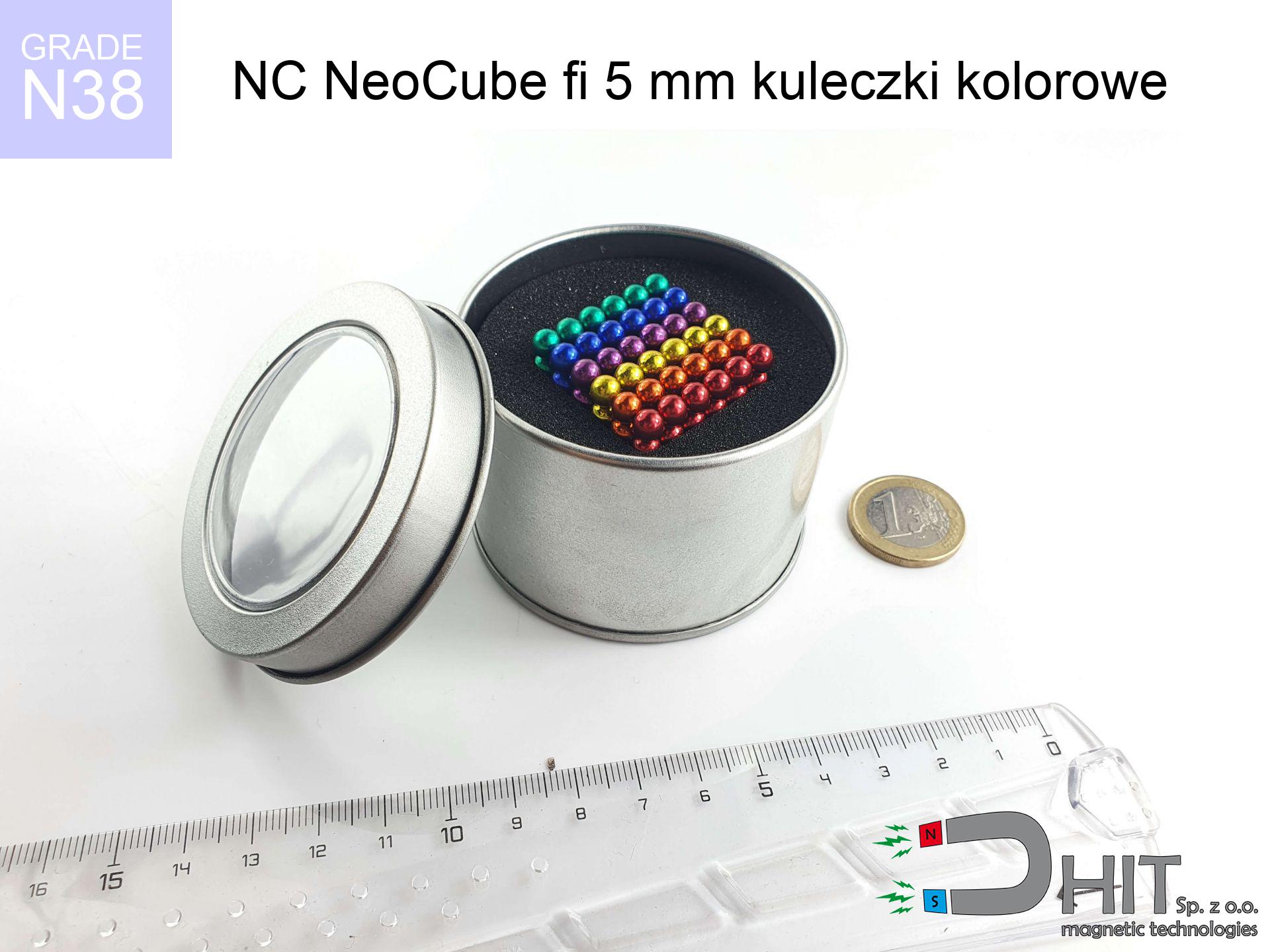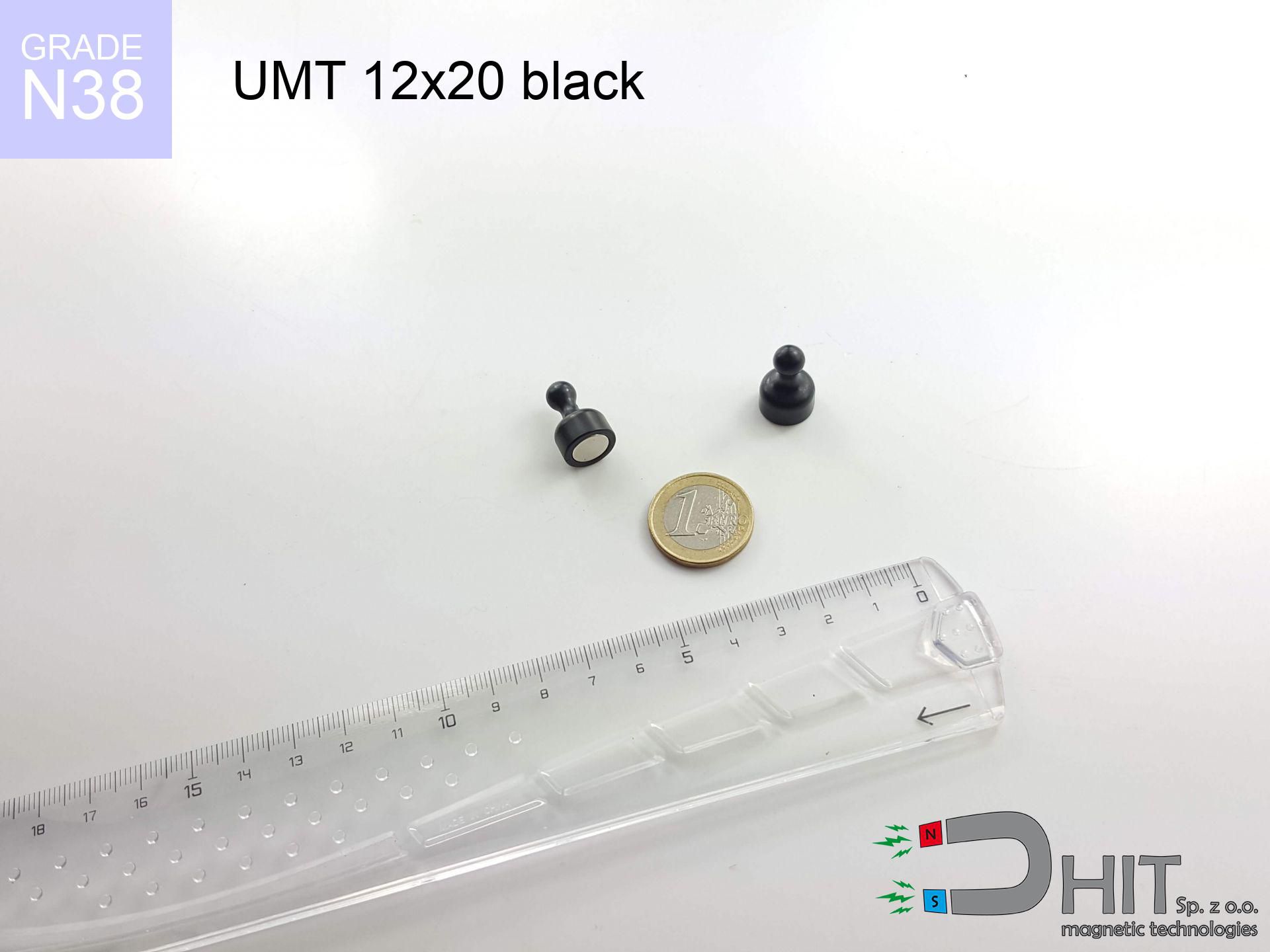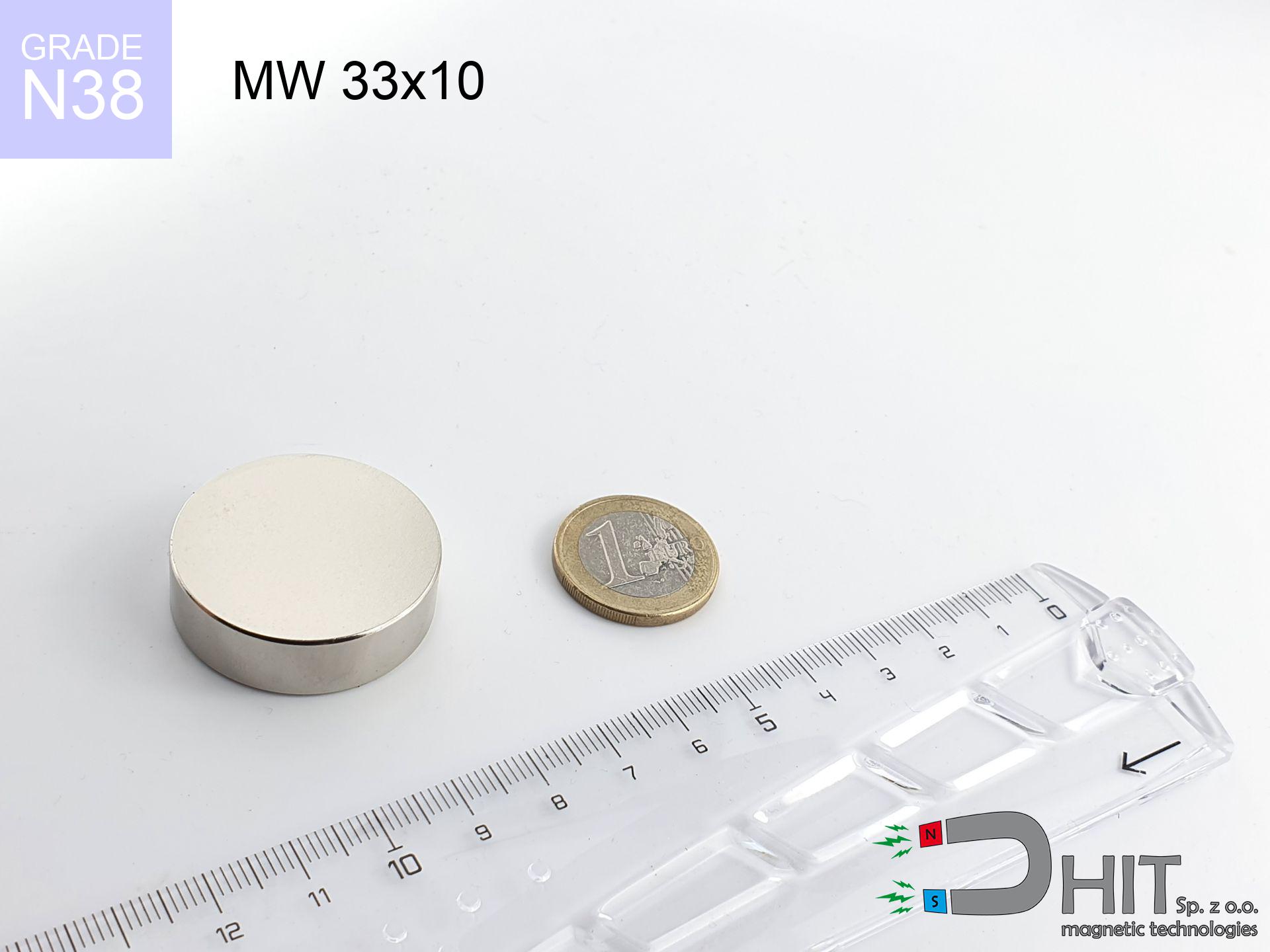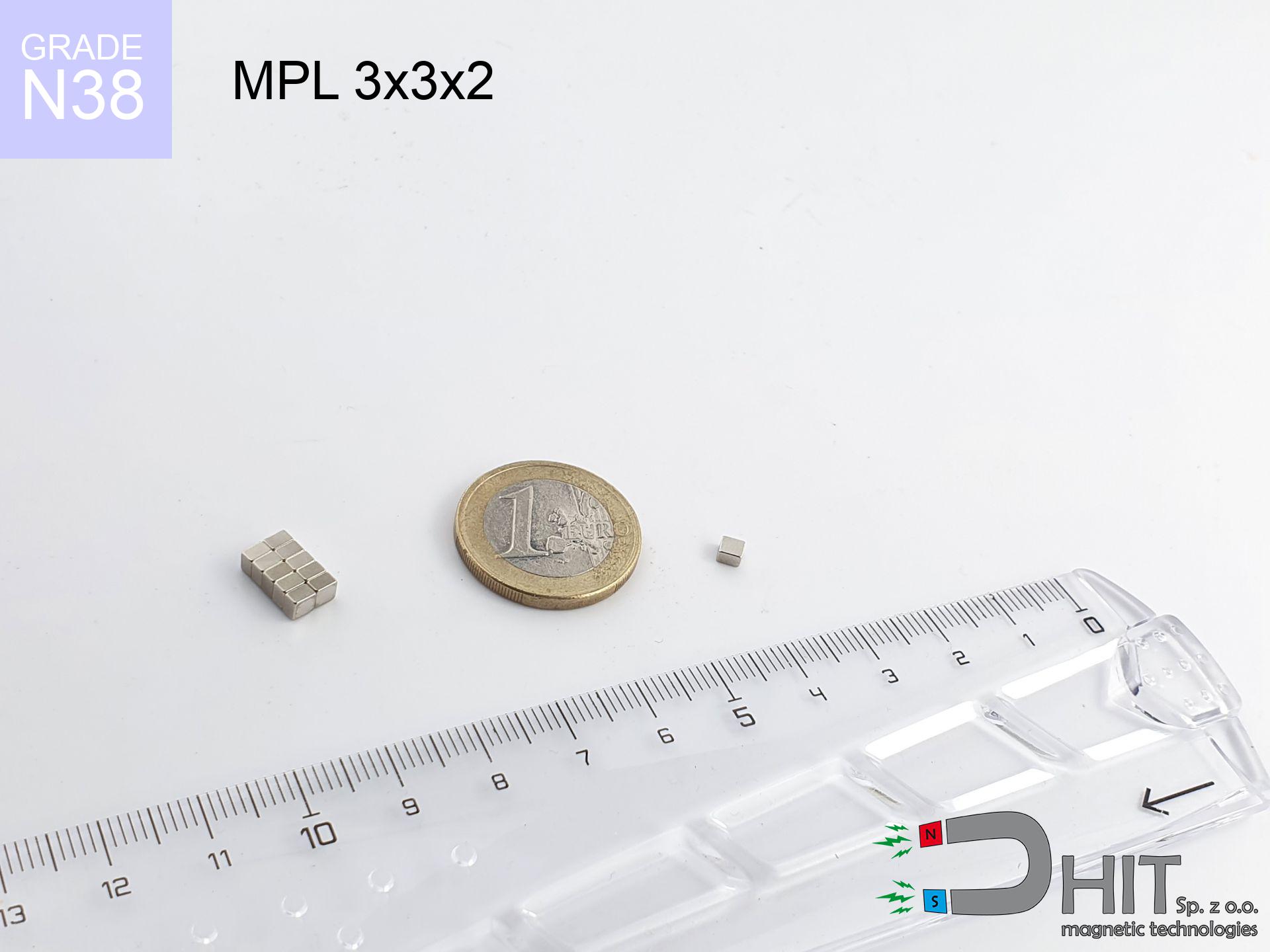NC NeoCube fi 5 mm kuleczki kolorowe / N38 - neocube
neocube
Catalog no 120229
GTIN: 5906301812685
Weight
145 g
Magnetization Direction
↑ axial
Coating
[NiCuNi] nickel
49.99 ZŁ with VAT / pcs + price for transport
40.64 ZŁ net + 23% VAT / pcs
bulk discounts:
Need more?Want to talk magnets?
Give us a call
+48 22 499 98 98
otherwise send us a note by means of
form
the contact form page.
Strength and form of magnetic components can be checked with our
online calculation tool.
Orders placed before 14:00 will be shipped the same business day.
NC NeoCube fi 5 mm kuleczki kolorowe / N38 - neocube
Magnetic properties of material N38
Physical properties of NdFeB
Shopping tips
Advantages and disadvantages of neodymium magnets NdFeB.
In addition to their magnetic capacity, neodymium magnets provide the following advantages:
- They have constant strength, and over more than ten years their attraction force decreases symbolically – ~1% (according to theory),
- They show superior resistance to demagnetization from external magnetic fields,
- The use of a mirror-like nickel surface provides a refined finish,
- The outer field strength of the magnet shows remarkable magnetic properties,
- Neodymium magnets are known for exceptionally strong magnetic induction and the ability to work at temperatures up to 230°C or higher (depending on the magnetic form),
- Thanks to the freedom in shaping and the capability to adapt to individual requirements, neodymium magnets can be created in diverse shapes and sizes, which expands their functional possibilities,
- Key role in advanced technical fields – they are utilized in hard drives, electromechanical systems, medical equipment along with other advanced devices,
- Relatively small size with high magnetic force – neodymium magnets offer intense magnetic field in compact dimensions, which allows for use in small systems
Disadvantages of rare earth magnets:
- They can break when subjected to a powerful impact. If the magnets are exposed to shocks, they should be placed in a protective enclosure. The steel housing, in the form of a holder, protects the magnet from breakage and additionally strengthens its overall strength,
- Magnets lose field strength when exposed to temperatures exceeding 80°C. In most cases, this leads to irreversible performance loss (influenced by the magnet’s dimensions). To address this, we provide [AH] models with superior thermal resistance, able to operate even at 230°C or more,
- Magnets exposed to wet conditions can oxidize. Therefore, for outdoor applications, we recommend waterproof types made of rubber,
- Limited ability to create precision features in the magnet – the use of a mechanical support is recommended,
- Potential hazard linked to microscopic shards may arise, when consumed by mistake, which is crucial in the health of young users. Moreover, minuscule fragments from these magnets might disrupt scanning after being swallowed,
- Due to a complex production process, their cost is relatively high,
Handle Neodymium Magnets Carefully
Dust and powder from neodymium magnets are flammable.
Do not attempt to drill into neodymium magnets. Mechanical processing is also not recommended. If the magnet is crushed into fine powder or dust, it becomes highly flammable.
Neodymium magnets can demagnetize at high temperatures.
Even though magnets have been observed to maintain their efficacy up to temperatures of 80°C or 175°F, it's essential to consider that this threshold may fluctuate depending on the magnet's type, configuration, and intended usage.
It is crucial not to allow the magnets to pinch together uncontrollably or place your fingers in their path as they attract to each other.
In the case of placing a finger in the path of a neodymium magnet, in that situation, a cut or a fracture may occur.
Avoid contact with neodymium magnets if you have a nickel allergy.
Studies clearly indicate a small percentage of people who suffer from metal allergies such as nickel. An allergic reaction often manifests as skin redness and rash. If you have a nickel allergy, try wearing gloves or avoid direct contact with nickel-plated neodymium magnets.
Neodymium magnets are the most powerful, most remarkable magnets on the planet, and the surprising force between them can surprise you at first.
To handle magnets properly, it is best to familiarize yourself with our information beforehand. This will help you avoid significant harm to your body and the magnets themselves.
Keep neodymium magnets away from GPS and smartphones.
Neodymium magnets are a source of strong magnetic fields that cause interference with magnetometers and compasses used in navigation, as well as internal compasses of smartphones and GPS devices.
Maintain neodymium magnets away from youngest children.
Remember that neodymium magnets are not toys. Do not allow children to play with them. In the case of swallowing multiple magnets simultaneously, they can attract to each other through the intestinal walls. In the worst case scenario, this can lead to death.
Neodymium magnets are characterized by their fragility, which can cause them to shatter.
Neodymium magnets are highly fragile, and by joining them in an uncontrolled manner, they will break. Neodymium magnets are made of metal and coated with a shiny nickel surface, but they are not as hard as steel. At the moment of collision between the magnets, small metal fragments can be dispersed in different directions.
Neodymium magnets should not be near people with pacemakers.
Neodymium magnets generate very strong magnetic fields that can interfere with the operation of a pacemaker. This happens because such devices have a function to deactivate them in a magnetic field.
You should maintain neodymium magnets at a safe distance from the wallet, computer, and TV.
Neodymium magnets generate strong magnetic fields that can damage magnetic media such as floppy disks, video tapes, HDDs, credit cards, magnetic ID cards, cassette tapes, etc. devices. They can also destroy videos, televisions, CRT computer monitors. Do not forget to keep neodymium magnets away from these electronic devices.
Warning!
So you are aware of why neodymium magnets are so dangerous, see the article titled How dangerous are very strong neodymium magnets?.



![HH 20x7.2 [M4] / N38 - through hole magnetic holder HH 20x7.2 [M4] / N38 - through hole magnetic holder](https://cdn3.dhit.pl/graphics/products/hh-20x7.2-m4-luc.jpg)




